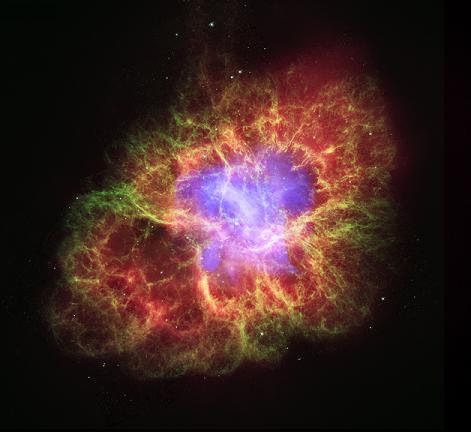The spectacular death of the Taurus star was observed from Earth as a supernova of 1054 AD. Today, almost a thousand years later, we see what remains of it - a neutron star. Following his death, he emits a storm of high-energy particles into space, this energy is known as the Cancer Nebula.
Universe Today. Translation - Yariv Zerbiv

In 1054 AD, Chinese astronomers recorded a change in the light of a well-known star in the Taurus constellation. Nearly a thousand years later, we look at the same area and see that the light is actually the remains of a star that exploded and became a nebula that we call the Cancer Nebula. This image is composed of images of the nebula from the Hubble, Chandra, and Spitzer space telescopes. What was once a large star is now seen only as an energy mass of particles and gas clouds spreading into space.
According to Celtic folklore and other ancient cultures, Halloween is marked as the day halfway between the autumnal equinox and the shortest day of the year, as is the astronomical astronomical calendar. It is said that this is a haunted night, where spirits try to return to our world. Today, Halloween is considered a holiday where children dress up as devils, but the true spirit of the holiday lives somewhere in the sky in the guise of the Cancer Nebula.
The spectacular death of the Taurus star was observed from Earth as a supernova of 1054 AD. Today, almost a thousand years later, we see what remains of it - a neutron star. Following his death, he emits a storm of high-energy particles into space, this energy is known as the Cancer Nebula.
This image is made up of three NASA space observations: X-rays from the Chandra Space Telescope show the blue light, photos from the Hubble Optical Space Telescope show shades of green and dark blue, and for dessert added details from the Spitzer Space Telescope that photographed the same nebula in the infrared range. The x-rays are smaller than the rest because the high x-rays emit radioactive radiation faster than the low radiation emitted by the other telescopes. The neutron star, whose mass is equal to the sun, is compressed into a rapidly rotating neutron ball, the ball can be identified by the white dot in the center of the image.
